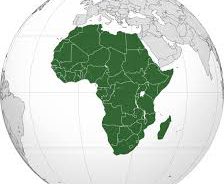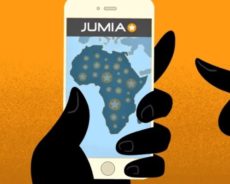- Says Africa to have over 1 billion mobile subscriptions by 2022
 According to the latest edition of the Ericsson Mobility Report there will be over 1 billion mobile subscriptions in Nigeria and other countries in the continent for the next six years.
According to the latest edition of the Ericsson Mobility Report there will be over 1 billion mobile subscriptions in Nigeria and other countries in the continent for the next six years.
The over 1 billion mobile subscriptions will be a 105 percent increase up from the current 85 percent.
The report also predicts that from 2016 to 2022, Sub-Saharan Africa will dramatically shift from a region with a majority of GSM/EDGE-only subscriptions, to around 83 percent of all subscriptions on WCDMA/HSPA and LTE.
Jean-Claude Geha, President of Ericsson Sub-Saharan Africa says: “Data traffic is forecast to grow by around 55 percent annually between 2016 and 2022, that is a 13 times growth. This rapid growth is driving operators to explore methods of optimizing network capacity, one of which is complementing traffic via Wi-Fi networks – with traffic expected to rise 70% annually between 2016 and 2022.”
By the end of 2016, there will be 3.9 billion smartphone subscriptions globally and by 2022, the number of smartphone subscriptions is forecast to reach 6.8 billion, with more than 95 percent of the subscriptions registered on WCDMA/HSPA, LTE and 5G networks.
In Sub-Saharan Africa smartphones penetration will reach around 80 percent by 2022 while mobile subscriptions on smartphones will rise by 21 percent annually from 2016 to 2022.
Almost 90 percent of these subscriptions globally will be registered on WCDMA/HSPA and LTE networks.
The report also highlights that across sub-Saharan Africa cellular IoT connections will grow from 11 million in 2016 to 75 million connections in 2022 with 8.9 billion mobile subscriptions, of which 90 percent will be for mobile broadband.
As of Q3 2016, 84 million new mobile subscriptions were added during the quarter to reach a total of 7.5 billion, growing at around 3 percent year-on-year. The total number of mobile broadband subscriptions is now around 4.1 billion.
Mobile data traffic continues to grow, driven both by increased smartphone subscriptions and a continued increase in average data volume per subscription, fueled primarily by more viewing of video content. In Q3 2016, data traffic grew around 10 percent quarter-on-quarter and 50 percent year-on-year.
A rise in access and viewing of video content is also a driver for mobile data traffic growth in Sub-Saharan Africa. Other drivers are wider network coverage, continued reduction in prices of both devices and services and a growing population with 57% of the current population under 15 years old.
Mobile video traffic is forecast to grow by around 50 percent annually through 2022 to account for nearly 75 percent of all mobile data traffic. Social networking is the second biggest data traffic type after video, forecast to grow by 39 percent annually over the coming six years.
Consumers are increasingly using live video streaming apps to interact with friends, family and followers. Around one in five smartphone users in the US express an interest in live video broadcasting, with twice as many smartphone users in high growth markets like India, Indonesia, Brazil and Oman who are interested in such apps. Around 29 billion connected devices are forecast by 2022, of which around 18 billion will be related to IoT.








